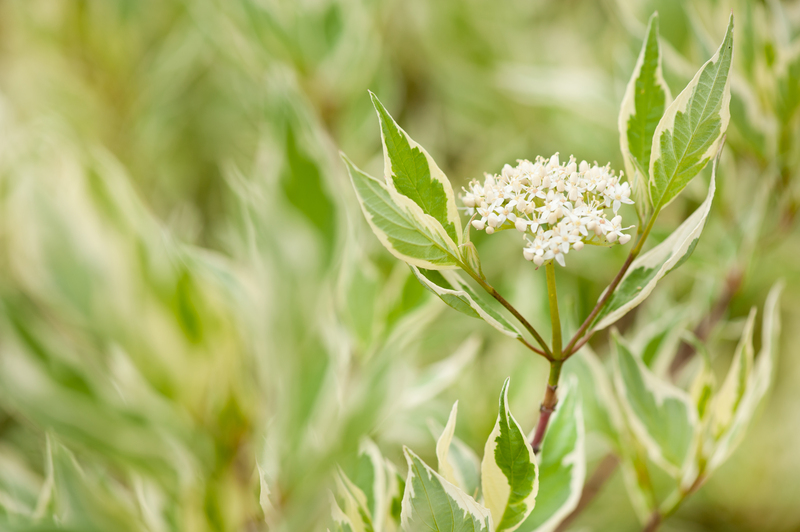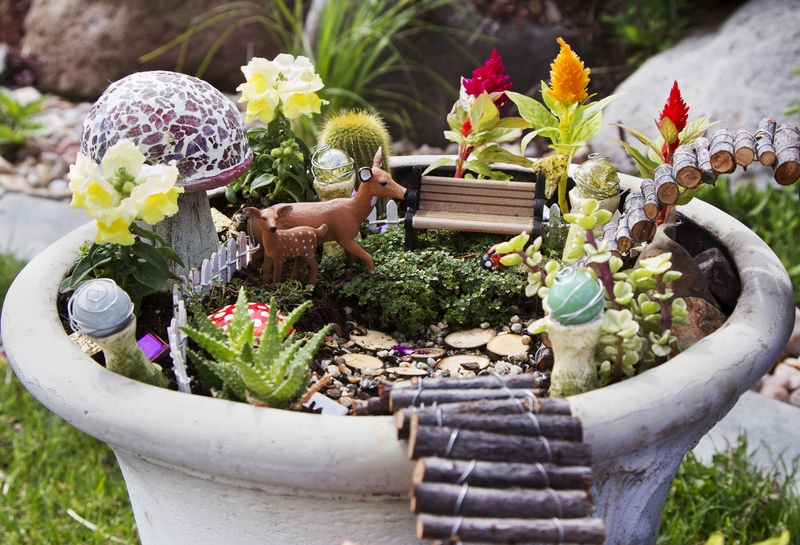Discovering the Potential of Vertical Gardening
Posted on 14/06/2025
Discovering the Potential of Vertical Gardening
Introduction to Vertical Gardening
Are you searching for an innovative and space-saving way to bring more greenery into your life? Vertical gardening is an exciting approach that enables gardeners, homeowners, and urban dwellers to maximize green space by growing upwards rather than outwards. Discovering the potential of vertical gardening not only transforms underutilized walls, fences, and balconies into lush, productive gardens but also introduces functional beauty to both indoor and outdoor environments.

What is Vertical Gardening?
Vertical gardening, also known as living walls or green walls, refers to the practice of cultivating plants on a vertically suspended panel using soil, hydroponics, or aeroponic systems. Unlike traditional horizontal gardens, vertical gardens utilize vertical surfaces such as walls, trellises, or stacking modules, making them ideal for areas with limited ground space.
Key Features of Vertical Gardening:
- Maximizes planting space by utilizing vertical surfaces
- Enhances visual appeal and brings natural elements into urban settings
- Provides opportunities for growing a wide variety of plants, including edibles, ornamentals, and air-purifying species
- Improves air quality and contributes to insulation
- Allows easy access for maintenance and harvesting
The Benefits of Vertical Gardening
The potential of vertical gardening extends beyond mere aesthetics. Here are some compelling reasons to consider adopting this gardening trend:
1. Space Efficiency
Perhaps the most significant advantage is space optimization. Vertical gardens make it possible to grow plants in tight spaces such as apartments, condominiums, patios, and balconies. You can even transform unused walls around your home, office, or business into lively, productive green areas.
2. Enhanced Aesthetics and Well-being
Vertical gardens serve as living artworks, infusing indoor and outdoor spaces with natural beauty, color, and texture. Studies show that being surrounded by greenery improves mood, reduces stress, and fosters creativity and productivity.
3. Improved Air Quality
Plants are natural air purifiers. By growing vertically, you can maximize the air-filtering effects of your greenery, which helps absorb toxins, improve oxygen levels, and regulate humidity.
4. Insulation and Energy Savings
Living vertical walls create a natural layer of insulation, reducing heat absorption and helping regulate indoor temperatures. This can lead to lower energy bills and enhanced comfort, particularly in urban environments where concrete and glass can amplify heat.
5. Greater Accessibility and Reduced Pest Issues
Using tiered systems or wall-mounted planters, you can access plants more easily for watering, pruning, and harvesting, making gardening less labor-intensive. Elevating plants also helps minimize common garden pests such as slugs and snails.
Exploring Different Types of Vertical Gardens
When discovering the potential of vertical gardening, you'll find numerous creative methods to suit any situation or skill level. Some of the most common vertical garden systems include:
1. Living Walls and Green Walls
A living wall is a structure attached to a vertical surface, filled with growing media, irrigation systems, and carefully arranged plants. These walls can be custom-designed or modular, providing stunning effects for both interiors and exteriors.
2. Trellises and Climbing Supports
Trellises, arbors, and lattices allow vining plants--like peas, beans, cucumbers, or flowering vines--to climb and flourish. This simple method is low-cost and effective for both decorative and productive gardens.
3. Stackable Planters and Tiers
Modular or stackable planters are designed as self-contained units that can be vertically stacked. These are perfect for herbs, lettuces, or even strawberries and can be easily adapted to patios and balconies.
4. Pocket Planters and Vertical Pallets
Pocket planters--made of fabric, felt, or other materials--feature multiple pockets for planting various species. Pallets can also be repurposed creatively to host a range of small plants.
5. Hanging Gardens
Hanging pots, baskets, or even upcycled bottles suspended vertically can add layers of green to indoor and outdoor spaces. These systems are affordable, accessible, and easily customized.
Plants Best Suited for Vertical Gardening
The best plants for vertical gardens will depend on your light conditions, climate, and space. Here are some popular choices:
- Herbs: Basil, mint, oregano, thyme, and parsley thrive in vertical systems.
- Leafy Greens: Lettuces, spinach, kale, and arugula grow quickly and are easy to harvest.
- Vining and Climbing Vegetables: Peas, beans, cucumbers, and tomatoes work well on trellises and towers.
- Ornamental Plants: Ferns, philodendrons, pothos, and flowering annuals for lush, visual impact.
- Succulents and Air Plants: Low-maintenance options that suit indoor or outdoor living walls.
Tip: Always select plants with similar water and light requirements for each vertical section.
How to Get Started with Vertical Gardening
Ready to embark on your vertical gardening journey? Follow these simple steps to make the most of your experience:
1. Evaluate Your Space
Begin by identifying the wall, fence, or spot where you want to install your vertical garden. Consider:
- Amount of sunlight the area receives
- Access to water and drainage
- Support structure required for your chosen plants and system
2. Choose Your Vertical Garden System
Select a vertical garden style that matches your aesthetic preference, budget, and available space. Consider whether you'd like a DIY solution using recycled materials or a pre-made modular system for convenience.
3. Select Suitable Plants
Pick plants based on your growing environment. For instance, shade-tolerant ferns for north-facing walls or sun-loving vegetables for south-facing balconies.
4. Prepare the Growing Medium
Depending on your system, you might use potting mix, soil-less media, or a hydroponic solution. Ensure good moisture retention and adequate drainage.
5. Install Irrigation and Drainage
Some vertical gardens demand integrated drip irrigation for consistent watering. Plan for excess water to drain away, preventing root rot.
6. Plant and Maintain
Install your plants carefully to avoid overcrowding and allow room for growth. Regularly check for watering needs, prune plants to promote bushiness, and watch for any signs of disease or pests.
Common Challenges and Solutions in Vertical Gardening
While the potential of vertical gardening is immense, gardeners may face certain challenges. Here's how to address them:
1. Watering Concerns
Vertical systems may dry out faster than traditional gardens. Install a drip irrigation system and add moisture-retaining polymers to the soil to maintain consistent hydration.
2. Weight and Structural Support
A mature vertical garden can become heavy. Always ensure your wall or support structure is strong enough to bear the load, especially when using soil-based living walls.
3. Sunlight and Shade
Vertical walls may cast shadows on lower sections, impacting plant growth. Arrange sun-loving species near the top and shade-tolerant options below, or rotate containers periodically.
4. Plant Health and Maintenance
Monitor for pests, diseases, and nutrient deficiencies. Regularly fertilize as nutrients may leach quickly from vertical arrangements.
Vertical Gardening for Sustainability and Urban Living
As cities grow denser and outdoor space becomes increasingly scarce, vertical gardening solutions offer pathways to greener, healthier, and more self-sufficient lifestyles. Benefits span beyond private homes to include commercial buildings, schools, hospitals, and community spaces.
Key sustainability advantages include:
- Boosting local food production: Urban vertical gardens enable on-site cultivation, reducing food miles and encouraging fresh, organic produce.
- Reducing the urban heat island effect: Plants provide cooling and help offset cities' heat absorption.
- Enhancing biodiversity: Lush vertical habitats attract pollinators and birds, supporting urban ecosystems.
- Encouraging environmental awareness: Community vertical gardens connect people with nature and promote sustainable habits.
Innovative Applications of Vertical Gardening
Visionary projects across the globe illustrate the transformative power of vertical gardening techniques:
- Commercial buildings: Iconic living walls on skyscrapers improve office air quality and aesthetics.
- Restaurants: On-site vertical herb gardens provide chefs with a steady supply of fresh flavors.
- Hospitals and schools: Living walls in institutional settings foster healing and learning.
- Urban farming initiatives: Rooftop and vertical farms increase food security and empower local economies.

DIY Vertical Gardening Ideas for Beginners
Not sure where to begin? Here are easy and affordable DIY vertical gardening ideas to kickstart your green journey:
- Pallet Planters: Repurpose wooden pallets by attaching landscape fabric as planting pockets--a perfect fit for herbs and flowers.
- Shoe Organizer Gardens: Hang a fabric shoe organizer on a sunny wall, fill pockets with soil, and plant lettuces, strawberries, or flowers.
- Upcycled Bottles: Cut empty plastic bottles, line them vertically on a fence, and fill with lightweight soil and herbs.
- Vertical Ladder Planters: Lean a rustic ladder against a wall and add small pots or baskets on each rung for a charming plant display.
Conclusion: Embrace the Vertical Revolution
In summary, discovering the potential of vertical gardening opens up new possibilities for efficient use of space, beautiful green environments, and sustainable living. Whether you're working with a balcony, a small backyard, or an entire building facade, vertical gardening invites you to reimagine what a garden can be. By choosing the right system, suitable plants, and following best practices, you'll soon enjoy a living tapestry of color, flavor, and life--while contributing positively to your well-being and the planet.
Start your vertical gardening journey today, and unlock the benefits of a greener world--one wall at a time!

